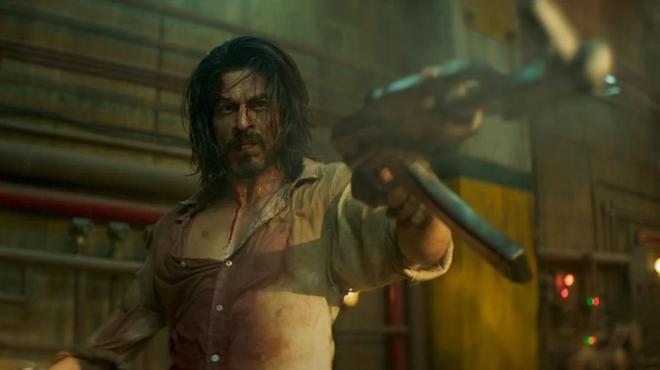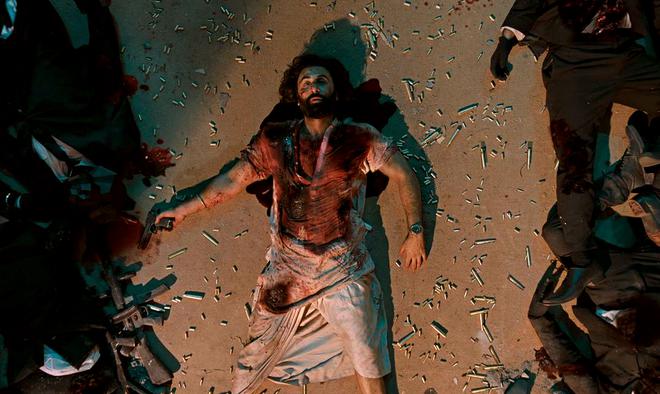A year’s releases aren’t a sample size big enough to suss out the state of a film industry or the status of filmmaking in the country. Yet, 2023 made it abundantly clear that big-bucks Bollywood is resilient — and resurgent, no matter the severity of the blow.
Post pandemic, 2022 belonged to directors from the South, with Telugu blockbuster RRR and Kannada hit KGF: Chapter 2 netting the biggest profits. Gangubai Kathiawadi made the year’s big Bollywood imprint.
In 2023, the action genre has had a rebirth like never before. And a lot of it has something to do with films from the South making a real crossover to the rest of this movie-fanatic nation. Starting before the pandemic, and during it, a slew of South Indian films started dropping on major streaming platforms. In 2022, after cinema halls opened and KGF: Chapter 2, written and directed by Prashanth Neel, released in theatres worldwide, audiences embraced the genre of the CGI-driven action spectacle wholeheartedly. The film went on to make ₹1,200 crore worldwide at the box office.

The massive success of the period action film, and the unprecedented global acclaim that came RRR’s way, possibly set the tone for 2023. Mumbai-based film analyst Komal Nahata puts this in perspective: “I have not seen any other year in which action films have done this well. Pathaan, Jawan, Gadar 2 and Animal have made history — four of the biggest blockbusters ever made in Hindi cinema. There was a theory earlier that action films don’t do well in multiplexes, and a good part of revenue for a film comes from multiplexes. This industry works on the principle of “bhed chaal” or herd mentality. And I see more actions films coming out in the next few years.”
Drawing the crowds

The combined box office collection of the four films is around ₹3,400 crore, with Shah Rukh Khan’s Jawan leading with a worldwide collection of ₹1,160 crore. Animal made all the wrong noises because of the misogynistic accent to the lead character played by Ranbir Kapoor. Yet, as an action film, it has been hugely successful, with some film lovers going to theatres simply to watch — and re-watch — a particularly violent sequence involving an en masse shootout with a multiple-barelled gun created for the film.
Khan’s January release, Pathaan, revived the hero who was missing in Bollywood — The Everyman who springs to great, and bizarre, heights to save, correct or redeem the rotten, redeeming themselves along the way. This was basically what Bachchan’s angry young man of the 70s was, without CGI. This is what Tamil superstar Rajnikanth’s career rests on. The latter’s film this year, Jailer, which fetched around ₹340 crore at the box office, was elemental Rajinikanth — but with a violence meter that peaked with stunning blood baths.
Choreographed stunts
For cinema from the South, it was just another year. Action has alway been an integral part of Tamil cinema. Film critic Bharadwaj Rangan, author of Conversations with Mani Ratnam, says, “The freshness/ newness that only Hindi film viewers find in Pathaan and Jawan is not really there.” Even a “family film” like Varisu, starring Vijay, has action, says Rangan. But the one South film that stood out for him in terms of action was the Malayalam thriller, RDX, he says. “There is a fight in the open streets of a colony, and it was beautifully choreographed. Another standout was the coffee-shop action stretch in Vijay’s Leo.”
Malayalam hits like Mammootty’s Kannur Squad, which is about a special four-member police investigation team that travels to North India to apprehend some criminals, and Kasargold, set around the apocryphal world of gold smuggling, had plenty of stylised action sequences.
The Southern formula worked its magic like never before all over India in September this year with Tamil director Atlee’s Jawan. The film fortified the Khan brand of vigilantism more forcefully, placing him firmly as the gunned hero with the solution for all social ills. In both Jawan and Pathaan, Khan embodies a kind of wokeism that’s so 2023 India. His allies are women, he valourises an Afghan adoptive mom as much as he does the Indian military forces, is attuned to the plight of farmers as well as to those who have to get medical treatment at India’s government hospitals. The man asks India to vote against hate and inflation. He mutters “Jai Hind” at the end of his life’s biggest mission instead of roaring it like an otherwise bland action hero would do.
With big-bang action defining the year in cinema, analysts find enough reasons for its appeal, beyond just the financial promise of competently-designed and technologically-rich films. Rachel Dwyer, author of several books on Indian cinema and professor of Indian Cultures and Cinema at SOAS, University of London, says, “Many people in India today feel pride in their country becoming more significant globally. Is vigilantism (which many of the year’s action films are about) based on a feeling that society is unfair, that not just the poor but even the middle-class is struggling while the signs of wealth are ever more visible?” Dwyer sees a triumphant return of Deewar’s Vijay, but in more hot-headed and rampaging avatars.
The brain helps
One of the best explanations of how an action film acts on our psyche and why so many people can’t resist watching it at the theatres is that of American social psychologist Jeffrey Zacks. He explains the neurological experience of watching a film in his book Flicker (2014). The part of the brain called the prefrontal cortex helps in imagining or connecting with reel images. This region can be controlled, because of which we are able to stop from acting or behaving the same way the hero or other characters do.
But patients with damage to this area are more likely to respond to movies as if they are real, and jump and scream. Children also face a similar problem since their prefrontal cortex is still developing, says Zacks. That’s why they sometimes talk back to movies or jump and hide during scary scenes. “You know there is nothing up there on the screen that can touch you or hurt you or pull you out of your chair but we react as if they can,” Zacks writes.
Action heroes often make for grim fairy tales, but fairy tales nonetheless. They are great salves to despondence — over-ruthless governments, menacing laws and depths of human cruelty — but only after living and chasing through the good, bad and ugly of their own situations. The warrior hero or the vigilante isn’t going away from the big screens anytime soon.
The writer and critic is based in Mumbai.







